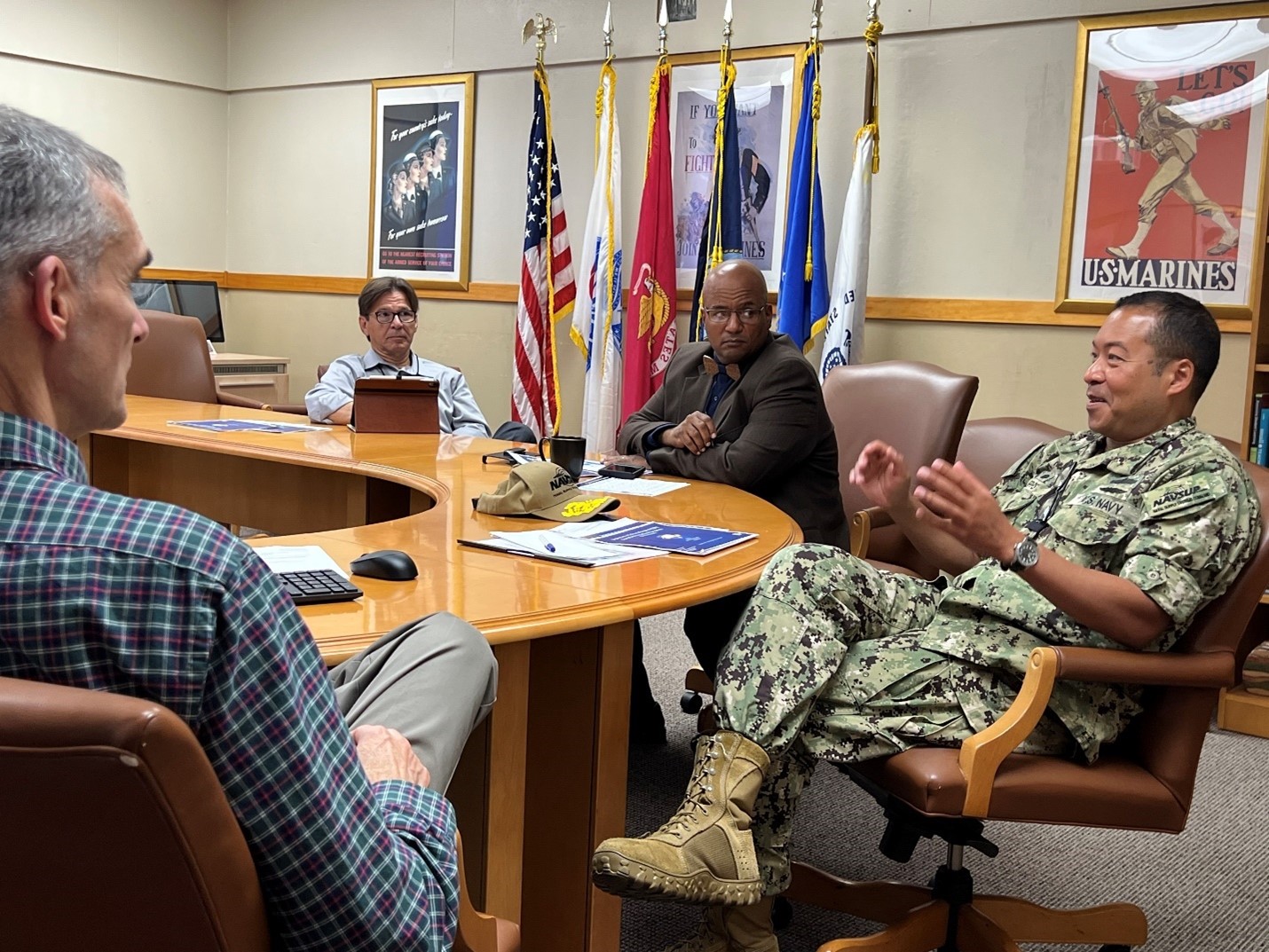On August 24, Rear Admiral Kenneth Epps, Commander of Naval Supply Systems Command (NAVSUP) and Chief of Supply Corps, met with faculty and students in the Department of Defense Management during a two-day visit to the NPS campus. The conversations shared information about both organizations and how NPS can align education and research with the needs of the Navy, particularly those of the Supply Corps.
Epps spoke at the Defense Management Speaker Series, addressing over 70 attendees in the room and online. His presentation targeted student warrior-scholars with lessons about the scope of NAVSUP, how the organization has implemented Get Real, Get Better, and recommendations for how tomorrow’s leaders can prepare themselves to succeed.
As the leader of an organization responsible for end-to-end customer support, Epps drove home the importance of weapon system sustainment, which makes up 90% of the total lifecycle cost of a program but receives very little attention in the planning process. He noted that program managers typically spend 90% of their energy on building the system, paradoxically leaving a small fraction of their efforts to manage the larger sustainment process.
That dynamic needs to change, Epps said. The challenge is that it’s “really hard to find someone to work on sustainment because it’s not sexy. Developing a new technology is sexy.”
NPS warrior-scholar students working in the Supply Corps need to be prepared for the complexities of managing sustainment in the future. “You are going to graduate into a world where a sustainment plan that looked great on paper won’t happen in reality,” Epps said, “and you’ll have to figure out what to do.”
Epps shared an example of how NAVSUP has taken more ownership over the sustainment tail by applying a Get Real, Get Better approach to contracts for repairs. Recently, NAVSUP leadership “went to all our commercial providers and told them, we need you to cut in half the repair turnaround time.” The stipulation was that NAVSUP was not going to pay more, but simply expected industry partners to do better.
And they delivered, halving their turnaround time. “That one step gives us the supplies we need to have on hand,” Epps said. NAVSUP scaled this across all the portfolios in NSSS, bringing savings of over $2 billion.

Epps followed this anecdote with a charge to the NPS warrior-scholars in the room to apply similar creative approaches that can improve business processes and enhance readiness. He suggested they use their time at NPS to make that happen by getting a “rock-solid foundation” and becoming “a master of your craft. From there, it’s possible to innovate and apply Get Real, Get Better.”
He also urged students to take advantage of their close proximity to the Silicon Valley tech hub. “Go to Menlo Park and talk to people” about the latest tech advances, he said, “and bring that back” to the Navy.

Epps closed his talk with recommendations for eight books and six podcasts, beginning with a classic of writing instruction: Strunk & White’s 1959 book, The Elements of Style. As Epps said, “One thing that will separate you as a senior leader is the ability to write clearly. 90% of you are not good writers. I’ll gift you The Elements of Style. Your emails and papers will be demonstrably better.”
Other recommendations give guidance on working out (Eat Bacon, Don’t Jog by Grant Petersen), striking a balance between professional success and family (The Algebra of Happiness by Scott Galloway), and understanding how the history of the United States is intertwined with the birth of the Navy (Six Frigates: The Epic History of the Founding of the U.S. Navy, by Ian W. Toll). A clear takeaway: leaders never stop making time to learn.

